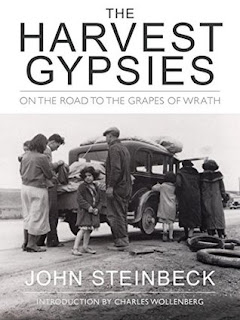The wine from Gapes of Wrath

“𝐓𝐡𝐞𝐲 𝐠𝐨𝐭 𝐭𝐨 𝐥𝐢𝐯𝐞 𝐛𝐞𝐟𝐨𝐫𝐞 𝐭𝐡𝐞𝐲 𝐜𝐚𝐧 𝐚𝐟𝐟𝐨𝐫𝐝 𝐭𝐨 𝐝𝐢𝐞.” That is what John Steinbeck, the Iconic American Novelist wrote when he presented the vagaries of the migrant workers in his Pulitzer Prize winning work in 1939, "𝑇ℎ𝑒 𝐺𝑟𝑎𝑝𝑒𝑠 𝑜𝑓 𝑊𝑟𝑎𝑡ℎ". The book raised a storm in California whose backdrop he built the narrative. One County Banned the book for almost one and half year. But that neither stopped Steinbeck from becoming most celebrated writer in the United States nor the book from winning a Pulitzer and talking to the conscience of millions who read it even now. Steinbeck did not spin it as a fiction out of thin air or Hearsay. He had done a series of trips and followed the lives of the migrant workers early ‘30s and based on which he had written a set of essays released in as “𝑇ℎ𝑒 𝐻𝑎𝑟𝑣𝑒𝑠𝑡 𝐺𝑦𝑝𝑠𝑖𝑒𝑠: 𝑂𝑛 𝑡ℎ𝑒 𝑅𝑜𝑎𝑑 𝑡𝑜 𝑡ℎ𝑒 𝐺𝑟𝑎𝑝𝑒𝑠 𝑜𝑓 𝑊𝑟𝑎𝑡ℎ”. These Essays raise a very interesti...


